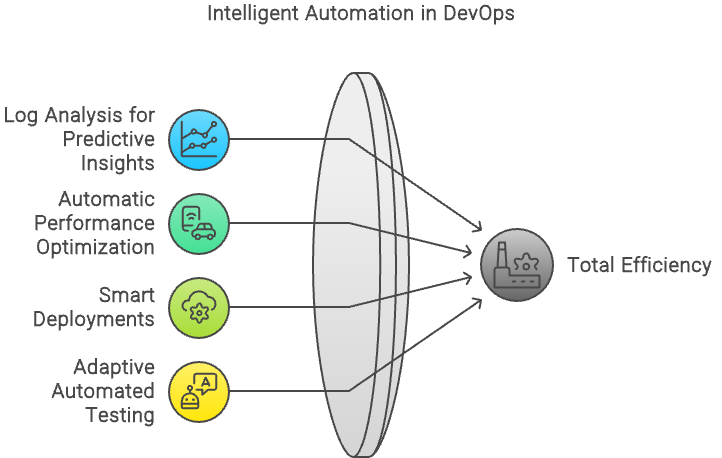
Suppose you’re building a house. You wouldn’t try to do everything with just a hammer, right? You’d need different tools for different jobs: measuring tools, cutting tools, fastening tools, and finishing tools. DevOps is quite similar. It’s like having a well-organized toolbox where each tool has its special purpose, but they all work together to help us build and maintain great software. In DevOps, understanding the tools available and how they fit into your workflow is crucial for success. The right tools help ensure efficiency, collaboration, and automation, ultimately enabling teams to deliver quality software faster and more reliably.
The five essential tool categories in your DevOps toolbox
Let’s break down these tools into five main categories, just like you might organize your toolbox at home. Each category serves a specific purpose but is designed to work together seamlessly. By understanding these categories, you can ensure that your DevOps practices are holistic, well-integrated, and built for long-term growth and adaptability.
1. Collaboration tools as your team’s communication hub
Think of collaboration tools as your team’s kitchen table – it’s where everyone gathers to share ideas, make plans, and keep track of what’s happening. These tools are more than just chat apps like Slack or Microsoft Teams. They are the glue that holds your team together, ensuring that everyone is on the same page and can easily communicate changes, progress, and blockers.
Just as a family might keep their favorite recipes in a cookbook, DevOps teams need to maintain their knowledge base. Tools like Confluence, Notion, or GitHub Pages serve as your team’s “cookbook,” storing all the important information about your projects. This way, when someone new joins the team or when someone needs to remember how something works, the information is readily accessible. The more comprehensive your knowledge base is, the more efficient and resilient your team becomes, particularly in situations where quick problem-solving is required.
Knowledge kept in one person’s head is like a recipe that only grandma knows, it’s risky because what happens when grandma’s not around? That’s why documenting everything is key. Ensuring that everyone has access to shared knowledge minimizes risks, speeds up onboarding, and empowers team members to contribute fully, regardless of their experience level.
2. Building tools as your software construction set
Building tools are like a master craftsman’s workbench. At the center of this workbench is Git, which works like a time machine for your code. It keeps track of every change, letting you go back in time if something goes wrong. The ability to roll back changes, branch out, and merge effectively makes Git an essential building tool for any development team.
But building isn’t just about writing code. Modern DevOps building tools help you:
- Create consistent environments (like having the same kitchen setup in every restaurant of a chain)
- Package your application (like packaging a product for shipping)
- Set up your infrastructure (like laying the foundation of a building)
This process is often handled by tools like Jenkins, GitLab CI/CD, or CircleCI, which create automated pipelines, imagine an assembly line where your code moves from station to station, getting checked, tested, and packaged automatically. These tools help enforce best practices, reduce errors, and ensure that the build process is repeatable and predictable. By automating these tasks, your team can focus more on developing features and less on manual, error-prone processes.
3. Testing tools as your quality control department
If building tools are like your construction crew, testing tools are your building inspectors. They check everything from the smallest details to the overall structure. Ensuring the quality of your software is essential, and testing tools are your best allies in this effort.
These tools help you:
- Check individual pieces of code (unit testing)
- Test how everything works together (integration testing)
- Ensure the user experience is smooth (acceptance testing)
- Verify security (like checking all the locks on a building)
- Test performance (making sure your software can handle peak traffic)
Some commonly used testing tools include JUnit, Selenium, and OWASP ZAP. They ensure that what we build is reliable, functional, and secure. Testing tools help prevent costly bugs from reaching production, provide a safety net for developers making changes, and ensure that the software behaves as expected under a variety of conditions. Automation in testing is critical, as it allows your quality checks to keep pace with rapid development cycles.
4. Deployment tools as your delivery system
Deployment tools are like having a specialized moving company that knows exactly how to get your software from your development environment to where it needs to go, whether that’s a cloud platform like AWS or Azure, an app store, or your own servers. They help you handle releases efficiently, with minimal downtime and risk.
These tools handle tasks like:
- Moving your application safely to production
- Setting up the environment in the cloud
- Configuring everything correctly
- Managing different versions of your software
Think of tools like Kubernetes, Helm, and Docker. They are the specialized movers that not only deliver your software but also make sure it’s set up correctly and working seamlessly. By orchestrating complex deployment tasks, these tools enable your applications to be scalable, resilient, and easily updateable. In a world where downtime can mean significant business loss, the right deployment tools ensure smooth transitions from staging to production.
5. Monitoring tools as your building management system
Once your software is live, running tools become your building’s management system. They monitor everything from:
- Application performance (like sensors monitoring the temperature of a building)
- User experience (whether users are experiencing any problems)
- Resource usage (how much memory and CPU are consumed)
- Early warnings of potential issues (so you can fix them before users notice)
Tools like Prometheus, Grafana, and Datadog help you keep an eye on your software. They provide real-time monitoring and alert you if something’s wrong, just like sensors that detect problems in a smart home. Monitoring tools not only alert you to immediate problems but also help you identify trends over time, enabling you to make informed decisions about scaling resources or optimizing your software. With these tools in place, your team can respond proactively to issues, minimizing downtime and maintaining a positive user experience.
Choosing the right tools
When selecting tools for your DevOps toolbox, keep these principles in mind:
- Choose tools that play well with others: Just like selecting kitchen appliances that can work together, pick tools that integrate easily with your existing systems. Integration can make or break a DevOps process. Tools that work well together help create a cohesive workflow that improves team efficiency.
- Focus on automation capabilities: The best tools are those that automate repetitive tasks, like a smart home system that handles routine chores automatically. Automation is key to reducing human error, improving consistency, and speeding up processes. Automated testing, deployment, and monitoring free your team to focus on value-added tasks.
- Look for tools with good APIs: APIs act like universal adapters, allowing your tools to communicate with each other and work in harmony. Good APIs also future-proof your toolbox by allowing you to swap tools in and out as needs evolve without massive rewrites or reconfigurations.
- Avoid tools that only work in specific environments: Opt for flexible tools that adapt to different situations, like a Swiss Army knife, rather than something that works in just one scenario. Flexibility is critical in a fast-changing field like DevOps, where you may need to pivot to new technologies or approaches as your projects grow.
The Bottom Line
DevOps tools are just like any other tools, they’re only as good as the people using them and the processes they support. The best hammer in the world won’t help if you don’t understand basic carpentry. Similarly, DevOps tools are most effective when they’re part of a culture that values collaboration, continuous improvement, and automation.
The key is to start simple, master the basics, and gradually add more sophisticated tools as your needs grow. Think of it like learning to cook, you start with the basic utensils and techniques, and as you become more comfortable, you add more specialized tools to your kitchen. No one becomes a gourmet chef overnight, and similarly, no team becomes fully DevOps-optimized without patience, learning, and iteration.
By understanding these tool categories and how they work together, you’re well on your way to building a more efficient, reliable, and collaborative DevOps environment. Each tool is an important piece of a larger puzzle, and when used correctly, they create a solid foundation for continuous delivery, agile response to change, and overall operational excellence. DevOps isn’t just about the tools, but about how these tools support the processes and culture of your team, leading to more predictable and higher-quality outcomes.
Wrapping Up the DevOps Journey
A well-crafted DevOps toolbox brings efficiency, speed, and reliability to your development and operations processes. The tools are more than software solutions, they are enablers of a mindset focused on agility, collaboration, and continuous improvement. By mastering collaboration, building, testing, deployment, and running tools, you empower your team to tackle the complexities of modern software delivery. Always remember, it’s not about the tools themselves but about how they integrate into a culture that fosters shared ownership, quick feedback, and innovation. Equip yourself with the right tools, and you’ll be better prepared to face the challenges ahead, build robust systems, and deliver excellent software products.







